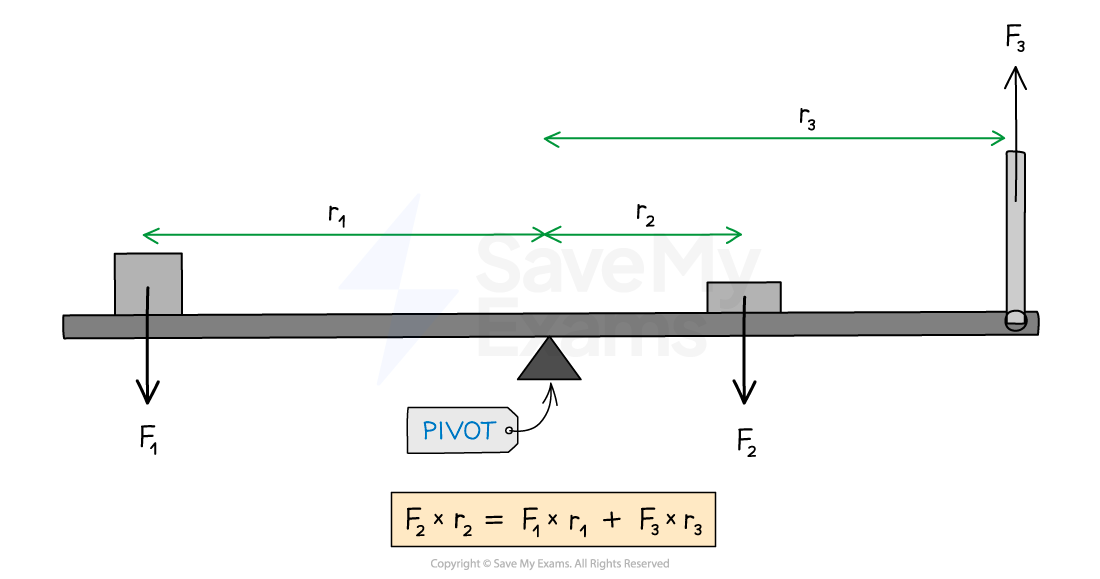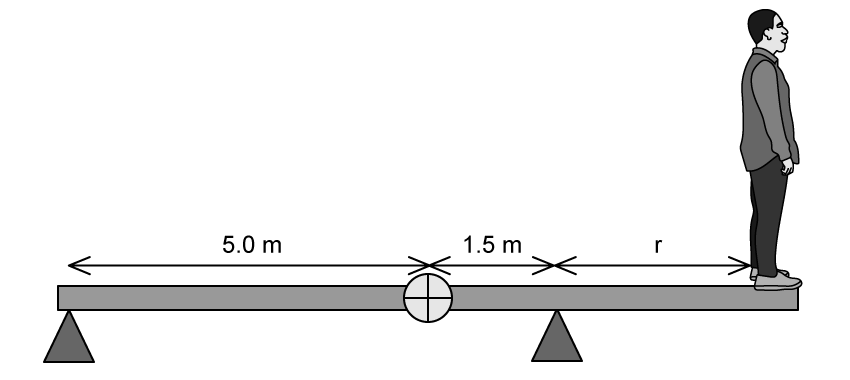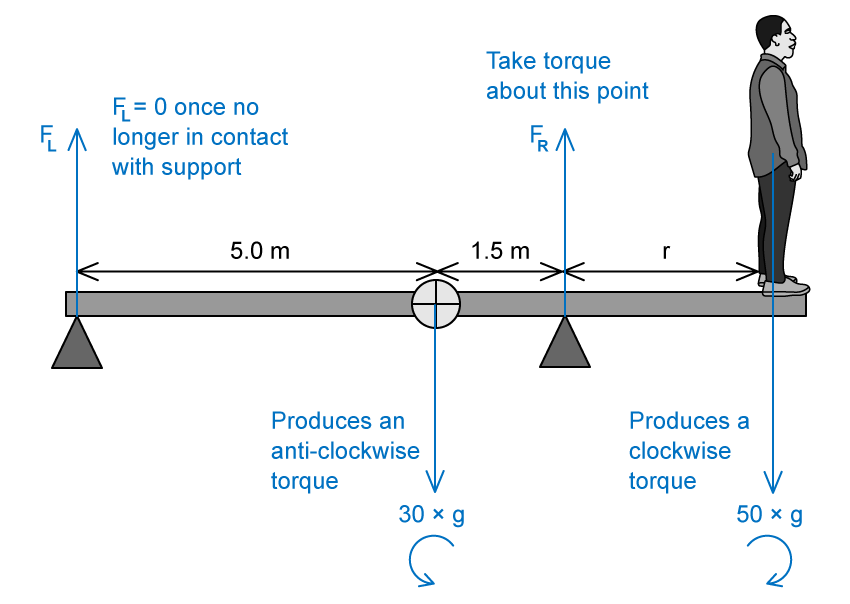Rotational Equilibrium (College Board AP® Physics 1: Algebra-Based): Study Guide
Rotational equilibrium
Rotational equilibrium is defined as
A configuration of torques such that the net torque exerted on the system is zero
This can be expressed as:
Rotational equilibrium is analogous to translational equilibrium
For a system in rotational equilibrium
no net torque acts on it
it has zero angular acceleration
it remains at rest or rotates with a constant angular velocity
Balanced torque
When a system is in rotational equilibrium, this means that
The sum of the clockwise torques is equal to the sum of the counterclockwise torques
This is known as the principle of torques (also called the principle of moments)
It can be applied to a range of scenarios, such as the balanced beam or seesaw problem
These problems usually involve objects on opposite sides of a lever (such as a seesaw) balancing one another
This type of problem can be solved by
identifying the location of the pivot and calculating the torque due to each force about this point
summing the clockwise torques and counterclockwise torques separately
using the principle of torques to calculate the unknown quantity
A beam in rotational equilibrium

Worked Example
Four beams of the same length each have three forces acting on them and pivot about their center of mass.
Which of the following beams is in rotational equilibrium?

The correct answer is C
Answer:
Step 1: Analyze the scenario
A beam is in rotational equilibrium when there is a net torque of zero acting on it, and this means that:
Total clockwise torque = total counterclockwise torque
Each force acts perpendicular to the beam, so each torque is equal to
Since the weight of each beam acts at the center of mass (i.e.
), this force does not produce a torque
Step 2: Determine the net torque on each beam
Beam A
Total clockwise torque = 10 × 50 = 500 N cm
Total counterclockwise torque = 27 × 30 = 810 N cm
Beam A has a net counterclockwise torque of 310 N cm
Beam B
Total clockwise torque = 50 × 50 = 2500 N cm
Total counterclockwise torque = 71 × 30 = 2130 N cm
Beam B has a net clockwise torque of 370 N cm
Beam C
Total clockwise torque = 15 × 50 = 750 N cm
Total counterclockwise torque = 25 × 30 = 750 N cm
Beam C has a net torque of 0
Beam D
Total clockwise torque = 43 × 50 = 2150 N cm
Total counterclockwise torque = 12 × 30 = 360 N cm
Beam D has a net clockwise torque of 1790 N cm
Step 3: Identify the correct answer
Only beam C has a net torque of zero, so it is in rotational equilibrium
Worked Example
A uniform plank of mass 30 kg and length 10 m is supported at its left end and at a point 1.5 m from its center of mass.

Calculate the maximum distance a child of mass 50 kg can walk before the plank begins to tip over.
Answer:
Step 1: Analyze the scenario
Normal forces,
and
, act vertically upwards at each support
Before the plank begins to tip, the system is in rotational equilibrium, so
Once the plank starts moving, the normal force from the left support force
becomes zero as the rod and support are no longer in contact

Step 2: Determine the torques about the axis of rotation
Each force acts perpendicular to the beam, so each torque is equal to
When the plank tips, the right support will act as the axis of rotation
Taking torques about the right support:
The torque due to
is zero
Total clockwise torque =
Total counterclockwise torque =
Step 3: Equate the clockwise and anti-clockwise torques
When the plank is in rotational equilibrium:
Total clockwise torque = total counterclockwise torque
Therefore, the plank will begin to tip when the child is 0.9 m from the right support
Examiner Tips and Tricks
When considering a system in rotational equilibrium, choosing certain points can simplify calculations of net torque. You can choose any point as long as you can relate it to the system's axis of rotation.
To simplify your calculation, choose a point where most forces are acting, as the torque due to these points becomes zero. When you need to determine the point where the net torque is zero, choose a point through which the lines of action of the forces pass.

Unlock more, it's free!
Did this page help you?